For the “difficult to decarbonise” air transport sector, the advancement of sustainable aviation fuels (SAF) and alternative propulsion sources are well under way, along with technological and operational emissions mitigation measures. But even collectively they are likely to fall significantly short of the achievement of emissions reduction goals stemming from the Paris Agreement on climate change. Hence demand management will be necessary. Fiscal instruments such as taxes and frequent flyer levies fall foul of privacy and competitive issues, and notably of the economic regulatory framework unique to international air transport services. But capping emissions directly is feasible and would have definitive effect. Chris Lyle elaborates on the issues and puts on the table an emissions capping concept with airports as the nub in the context of the flights they enable.
The United Nations Framework Convention on Climate Change (UNFCCC), in pursuance of its 2015 Paris Agreement and basing itself on present scientific consensus, advocates that global greenhouse gas emissions will have to peak by 2025 and be halved by 2030 over 2019 levels, with an aim of ‘climate neutrality’ by 2050. Emissions from international air transport have been the subject of outsourced treatment by the UNFCCC, with the International Civil Aviation Organization (ICAO) as surrogate. However, they remain under the UNFCCC umbrella and, notably given the sector’s economic impact (and Scope 3 emissions generation), they are expected to meet the same goals – which are largely accepted by the industry, certainly as regards the longer term.
There is increasing evidence that existing aviation emissions mitigation measures are substantially inadequate for meeting these goals, whether shorter or longer term. Technological and operational improvements are levelling off and are being well outdistanced by traffic growth. Alternative propulsion sources to kerosene are in development, with electric (battery and hydrogen fuel cell) and hybrid electric expected to be significant in the 2030s, but only for shorter-haul and smaller aircraft. Gas turbine and liquid hydrogen, requiring considerable renewable energy and major structural change both in design of aircraft and in fuel delivery, are not expected to be widely in usage before mid-century.
SAF is the critical in-sector measure on which expectations are pinned, but bio-based sources face questions as to their full life-cycle benefits, limits on the supply of raw materials and considerable barriers regarding the necessary investment, economic pricing and scaling up to a commercial level. Synthetic e-fuels (also known as power-to-liquid), like biofuels, have drop-in capability, plus they do not emit any greenhouse gas emissions at all in operation. However, their prices are likely to remain in the order of three times, if not more, that of kerosene, they require massive scale-up and their production requires an enormous volume of renewable energy – and notably green hydrogen, for which there will continue to be limited availability and intense competition.
As well as privacy and competitive issues, fiscal measures come up against the economic regulatory framework for international aviation – the global Chicago Convention plus a network of around three thousand bilateral air services agreements and a few regional agreements. A large majority of these include legally-binding implications that restrict the application of emissions mitigation tools, particularly including taxation as well as other market-based measures.
Finally, out-of-sector measures such as carbon offsetting, capture and storage are frequently of questionable or unproven value and must be regarded as transitional in favour of real in-sector reductions in emissions.
All avenues of exploration and development of technology, propulsion and SAF should and will continue to be pursued, but it is already evident that even when all these measures are taken together there remains a pressing, paramount need for substantial additional action. Climate Action Tracker, an independent scientific analysis that follows government climate action and measures it against the Paris Agreement, found in June 2020 and confirmed in September 2022 that mitigation measures for international aviation were “critically insufficient”, compatible with a 4°C+ world.
A survey by GE Aerospace prior to the Paris Air Show in June 2023 showed that even the aviation industry itself was split on whether its own net zero 2050 goal was achievable, with under half of the 325 executives surveyed believing the industry will meet that goal. At the recent 2024 Annual General Meeting of the International Air Transport Association (IATA) there were several public remarks conditionally backing that goal, but the climate of optimism did not seem to have moved forward over the past year. Serious concerns were expressed that the achievement of various SAF goals – and notably that of ICAO’s aspirational reduction of 5% globally in carbon intensity by 2030 – were simply not achievable given the formidable issues of full life-cycle assessment, scaling up and pricing down.
In April of this year IATA produced a report, ‘The Aviation Net Zero CO2 Transition Pathways Comparative Review’, which illustrated that there remain significant uncertainties regarding current routes and measures for achieving net zero. The 14 major global and regional net zero CO2 emissions roadmaps reviewed were based on differing assumptions, conditions and constraints. They all assume SAF will be responsible for the greatest amount of CO2 reductions by 2050, but their contribution varies from 24% to 70%. There are also differences in the forecast volume of residual emissions by 2050, which would necessitate continuing out-of-sector carbon capture or market-based measures.
Emissions capping rationale
In the light of the above, the need for specifically capping aviation operations has now come on the radar. For example, a comprehensive research report in 2023 by the Travel Foundation found only one scenario for travel and tourism to achieve net zero by 2050 and that incorporates slowing the growth in air transport, including capping long-haul flights (over 3,500 km) to 2019 levels.
Capping air transport emissions themselves – rather than the number of flights or through pricing mechanisms with their imprecise effects – would be direct and with a definitive impact. Imposition of a structure for capping emissions consistent with the Paris Agreement goals would proffer pre-determined limits and, coming into play when other measures are insufficient, would be a principal driver of mitigation. The conundrum is finding the most effective way to do this.
Irrespective of the ‘ownership’ of flight emissions – generally attributed to passengers/shippers and particularly air carriers, to whom mitigation action is today predominantly addressed – the best origin for capping the emissions is the airport. And the prevalence of self-interest and privacy issues for passengers/shippers, airlines and other market players means that government regulation is necessary. Emissions capping action with airports as nexus is feasible within the existing regulatory framework and could be most effective.
Blending mandates for SAF are effectively airport-oriented and amongst recent examples one by the Singapore government is of particular interest. In February 2024, it announced SAF blending targets for departing flights to be applied from 2026, in this case to be partly funded by a levy on passengers which will vary according to both class of travel and distance (in bands). This initiative falls within both the environmental and the economic regulatory frameworks for international air services – as could emissions capping action based on airport departures. Different circumstances apply from the 2023 Amsterdam Schiphol flight capping proposal, which was aimed essentially at noise and local air quality rather than emissions reduction and came up against the globally agreed ‘balanced approach’ to aircraft noise management.
At present, emissions assessed for airport accountability are limited in compass. Emissions ascribed to airports can be restricted to the Scope 1 airport operations, although increasingly they include a component of Scope 2 emissions. However, and crucially, they do not include emissions from the flights that the airports empower. Also, emissions from international flights are presently treated separately from those generated by domestic flights and from the not insubstantial emissions generated by local ground transportation and business created around airports by all flights.
Airports could become key enablers in aviation emissions reduction if their accountability were to move to a form of Scope 3 which had the extent of including emissions from the flights departing their runways to their first destination, whether domestic or international.
Capping emissions, not flights
A climate-based approach could be to cap not simply the number of flights but rather the volume of emissions from the first leg of all departing flights, whether by passenger, combi or freight aircraft. Data regarding CO2 from domestic operations should be readily accessible at the national level and data from international operations, in total and for individual routes, are available through various sources, notably including the Monitoring, Reporting and Verification system of ICAO. While not government instituted, the necessary information is also accessible from entities such as Google Flights and Travalyst. For the 1,300 largest global airports it has already been packaged since 2019 by Airport Tracker, a project attempting to visualise the climate impact of airports worldwide. In cases where data may be incomplete, emissions evaluated from fuel uplifted by flight could be used as a surrogate.
The capping approach – for an airport or for a group of airports serving the same city – could follow the UNFCCC direction by starting with the 2025 emissions peaking and being reduced annually through to half the 2019 levels in 2030. Beyond that time frame is presently aspirational and somewhat speculative. Parameters to apply beyond 2030 could be made at a later date; similarly, targets for non-CO2 emissions could be incorporated once a more definitive impact for them is accepted – although applying limits on CO2 emissions would automatically cap non-CO2 pro rata.
The table below, with data developed from Airport Tracker and flight search engines, illustrates the stark reality and enormity of such a challenge. The data are representative of the first leg of outbound flights for a typical large European airport (adjusted for illustrative purposes to a round total of 10 MtCO2 emissions for 2019 and hence half that, 5 MtCO2, for 2030). There is an assumed overall percentage increase of 3% in emissions for 2025 over 2019. A single capping reduction is here applied across the board, irrespective of distance. As shown, for the 2019 base year, 19% of departing flights were over 4,000 km but they produced 66% of the emissions. The contribution of long-haul is actually significantly higher than this at major hubs such as Paris Charles de Gaulle, Frankfurt or London Heathrow.
There would evidently be little room for manoeuvre of capping amongst distances given the dominant emissions contribution of long-haul. Nevertheless, the application might be tweaked according to individual country circumstances and policy, for example by division into two or three flight groups according to distance bands with differing capping reductions, by providing partial exemptions to key long-haul routes, or by taking into consideration carbon intensity (lower for longer haul). Where the concept covers a group of airports, different levels could be applied to each airport in reflection of differing market segmentation.
In pursuance of climate justice and the UNFCCC principle of Common but Differentiated Responsibilities, exemptions could be given for flights to and from Least Developed Countries, Landlocked Developing Countries and Small Island Developing States, with the cap(s) for other flights being reduced pro rata.
The procedure for application of the caps would, as today, be through the airport slot allocation process. While allocation based on emissions generated by a flight, rather than simply the flight itself, would add a dimension of complexity to the process, this would be well within the bounds of practicability, with likely fewer flights and little effect on timings.
Action could be taken nationally, with the level of capping or reduction determined in the context of other emissions mitigation measures in place for the country concerned. Such a national approach, if carefully designed and applicable to all carriers at an airport, would not breach the Chicago Convention or air services agreements. Even action by a handful of countries would help, preferably in a co-ordinated framework.
While the increasing plethora of SAF initiatives is encouraging, along with alternative propulsion sources for the longer term, regulatory capping action on reducing aviation emissions will almost certainly become, or remain, necessary for the Paris targets are to be achieved. With the need for CO2 peaking now only a year away, addressing such capping is well overdue. This article was developed with a view to encouraging debate, research and advocacy accordingly.
Editor’s note: Chris insists this is his last article for GreenAir and is taxiing off into the sunset after many years of contributing not just thoughtful Commentary op-eds on tackling the challenge of aviation’s impact on the climate but also the insights he shared from his vast experience of international aviation climate policy that stretches back to the adoption of the Kyoto Protocol in 1997, when he was a senior official at ICAO. We wish him and his wife Linda a long and happy retirement.
Top photo: Heathrow Airport
Views expressed in Commentary op-ed articles do not necessarily represent those of GreenAir.


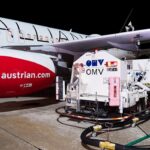
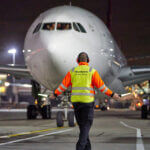
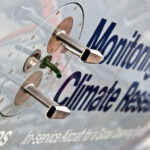



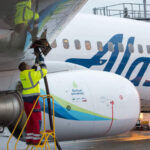
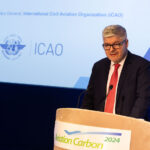



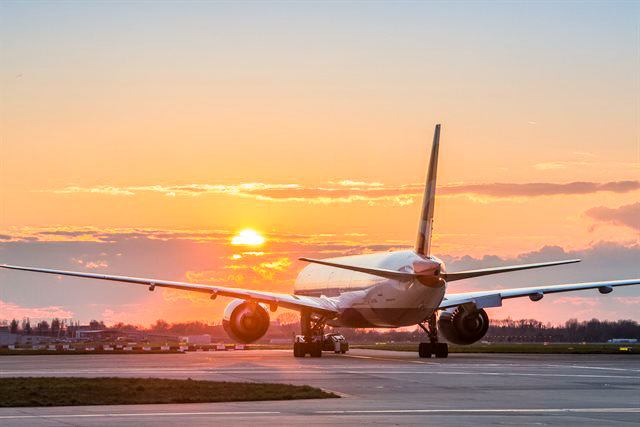


More News & Features
Commentary: China’s fair and equitable solution to civil aviation’s climate challenge
COMMENTARY: Airline industry faces carbon credit shortage in net-zero push
COMMENTARY: Tourism and aviation emissions mitigation policy – disparate and inadequate
Studies say Amsterdam’s Schiphol Airport must cut emissions over 30% by 2030 and cap demand
COMMENTARY: With mounting challenges over its climate impact, is aviation’s social licence at risk?
COMMENTARY: Deconstructing the roadmaps – what to expect from aviation emissions reduction plans